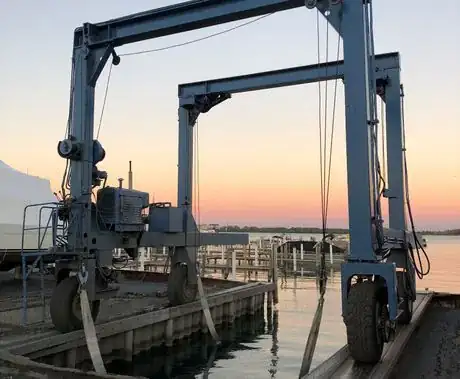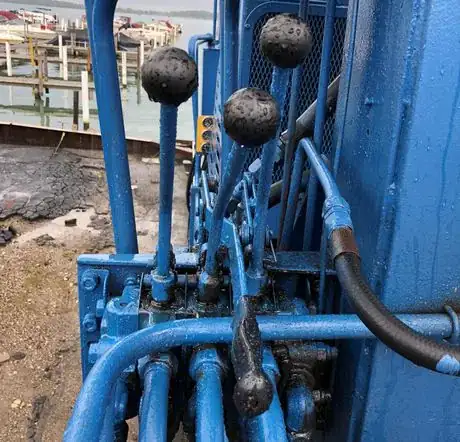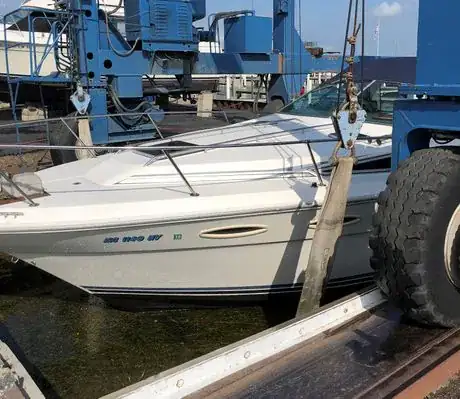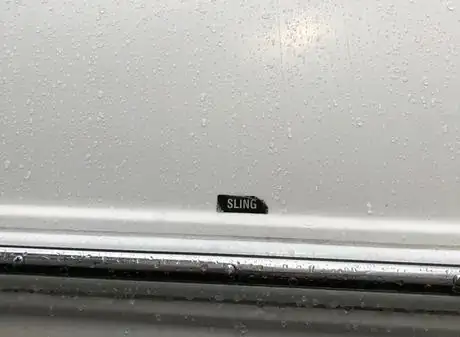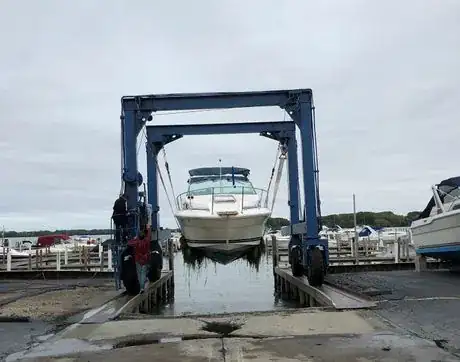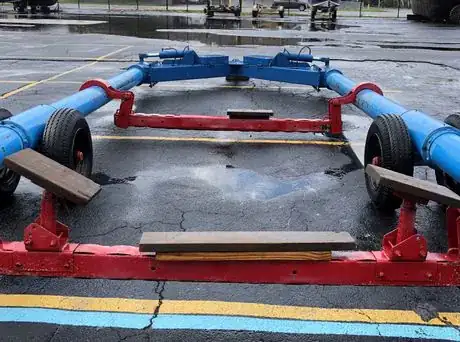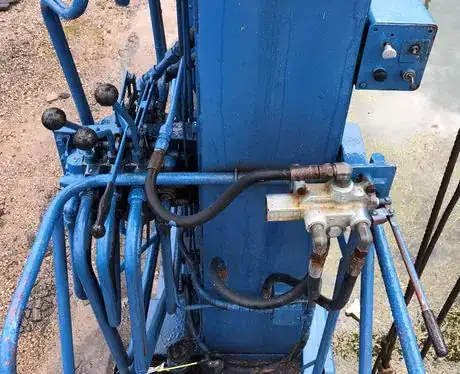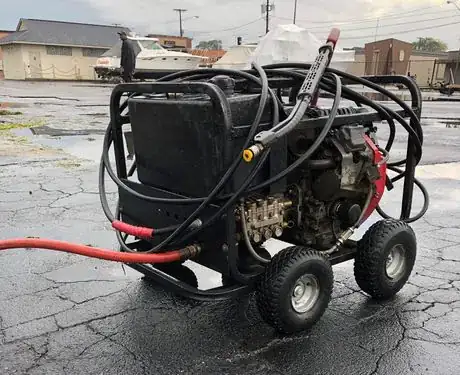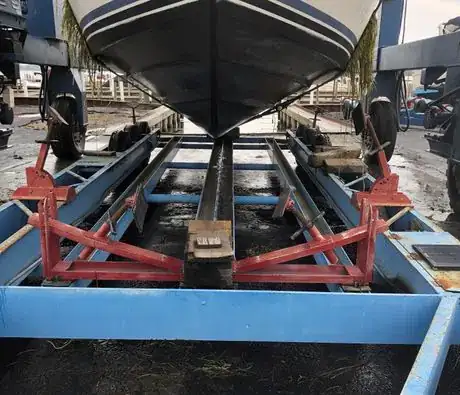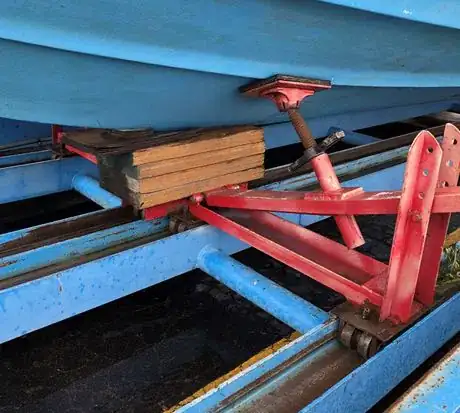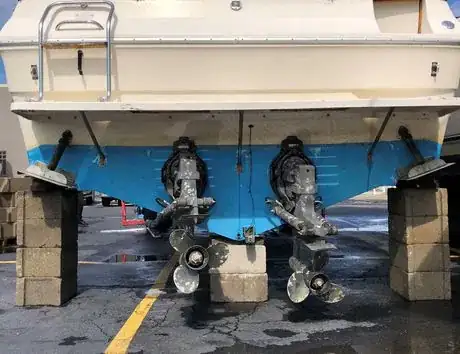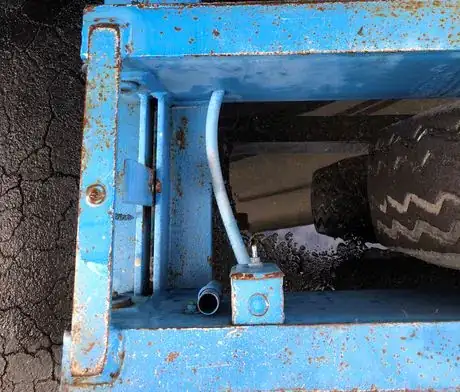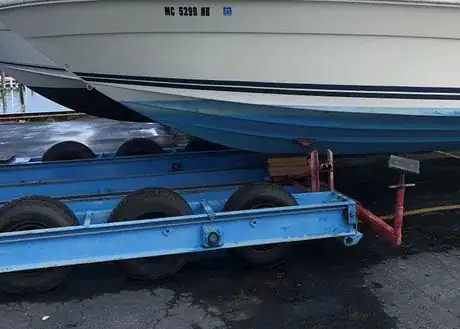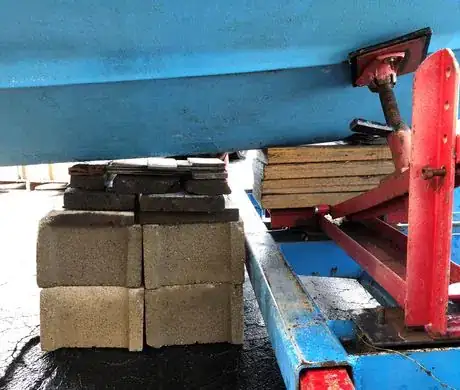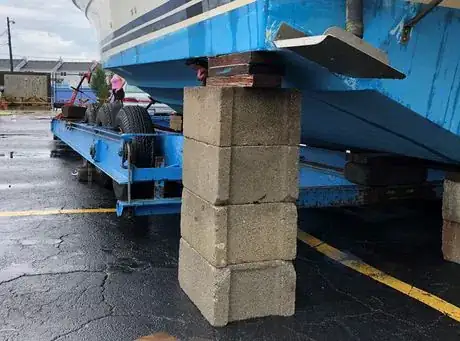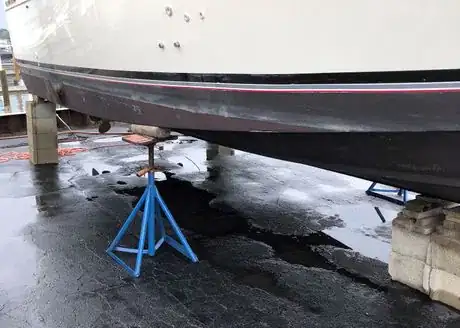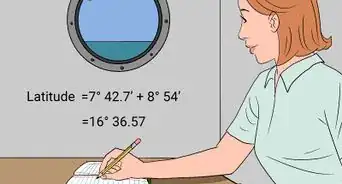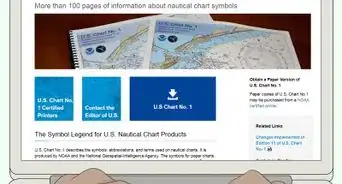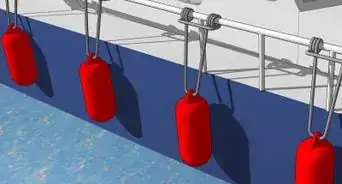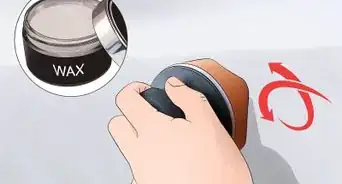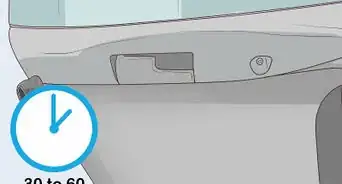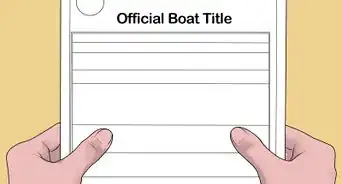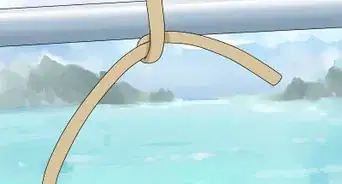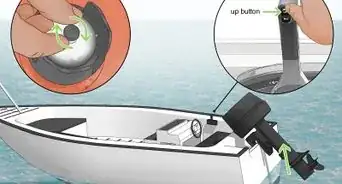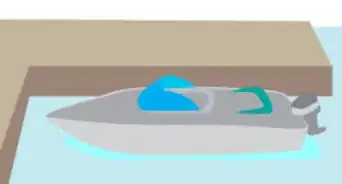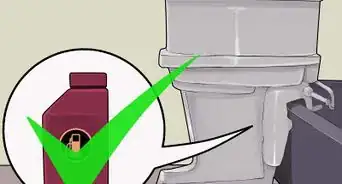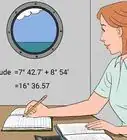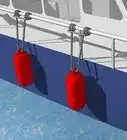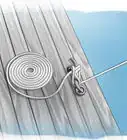wikiHow is a “wiki,” similar to Wikipedia, which means that many of our articles are co-written by multiple authors. To create this article, volunteer authors worked to edit and improve it over time.
This article has been viewed 13,282 times.
Learn more...
Taking a large boat or yacht out of the water is much more than just pulling up to a ramp and towing it back to your house. It involves heavy machinery, and it takes patience and a lot of care. This article is meant for marina/yacht club workers or anyone with some knowledge of boating who is interested in the process.
This wikiHow article will teach you step by step how to take a large boat out of the water using a marine travel lift (a large machine used to take boats in/out of the water), transport the boat to a viable spot, and block it up on land. Work carefully and check your surroundings and equipment after every step.
Steps
Taking the Boat out of the Water
-
1Get to know the travel lift. Before learning the individual controls of the travel lift, walk around and get a look at its mechanics.
- There are four wheels on the lift; the back two are the wheels that control the turning.
- Every travel lift has two straps (one in the back and one in the front) that can raise and lower using 3 levers. The point of the straps are to lift/lower a boat while giving it support.
-
2Turn on the travel lift and lower straps. To turn on the travel lift, you should turn the ignition on the right side of the control panel on the travel lift. Once started, lower the straps. To do this you will need to know the controls.
- The two levers on the left control the back strap and the horizontal lever 3rd from the left controls the front strap.
- To lower the back, you have to push the two levers upward (they move the straps opposite of the direction of the levers).
- Lower the front by pushing the third lever from the left down (it moves the strap the same direction as the lever).
- Lower the straps until they are about 3 feet underwater and the lowest point.
Advertisement -
3Bring the boat into the well. Drive the boat to the middle of the boat well where the travel lift is.
- The boat well is an inlet of water where boats are put in/taken out of the water. The travel lift is located above the well.
-
4Line up the straps to the sling marks. On the side of the boat, there should be a small mark labeled "sling." This is what the strap should be aligned with when pulling up the boat.
- Sling marks are there to make sure weight is distributed when the boat is being raised; if not the boat could slide back or forward off of the straps.
-
5Pull up the boat. Once the sling marks are lined up, you can start to pull up the boat. Do this by moving the levers opposite of how you lowered them.
- The left two levers go down and the third lever from the left goes up.
- Make sure to pull the straps up at the same time.
-
6Straighten out the boat. Make sure that the boat is on a level plane when pulling it out of the water.
- Since the front and back straps of the travel lift are independent of each other, you can move one or the other to straighten the boat. (For example, if the front of the boat is leaning down, pull up the front strap until even.)
Putting the Boat onto a Trailer
-
1Prepare the trailer. A marina will typically have a transporting trailer specifically used for moving boats a short distance. They are larger than a normal boat trailer and are moved using either a forklift, truck or other large machine.
- Put the trailer right behind the travel lift and make sure it is straight.
- Add a wooden block to the back support beam of the trailer.
- Stack 3 pieces of wood and one piece of plywood to the middle support beam of the trailer.
- Make sure that the wood is secure because this will hold most of the weight of the boat on the trailer (about 95%).
-
2Move the travel lift. You will be moving the travel lift backwards until the boat is fully over land. To do this you will use the fourth lever from the left to go forward and backward and use the horizontal lever on the right (under to the ignition) to turn the wheels.
- The travel lift will start off on wheel tracks right above the boat well; it should be moved backwards just past the tracks onto the cement.
- Make sure to move the travel lift slowly so that the boat does not move back and forth too much.
-
3Power wash the boat. Before the boat is put on the trailer, it needs the algae to be washed off with a power washer.
- Use an industrial power washer such as the one in the picture.
- Make sure not to get too close when spraying. It could cause the paint to be washed off of the boat.
-
4Take out the drain plug. There should be a plug in the back of the boat that can be unscrewed with a crescent wrench so that any water in the boat can drain.
- If there doesn't seem to be a plug in the back, don't worry. Some boats drain in the front and the boats that do this have no plug.
-
5Move the trailer under the boat. Once the boat is over land, the trailer can be moved so that the middle of the trailer is lined up with the middle of the boat.
-
6Lower the boat. Lower the straps of the travel lift until the boat is resting on the wood on the trailer.
-
7Tighten the support stands. On each four corners of the trailer there is a red support stand that adds support to the boat as it is moved. To tighten them, just turn the levers to the right.
- Make sure the stands are tightened after the boat is placed on the wood (the stands are only meant to hold about 5% of the weight of the boat).
- Make sure the platforms on the support stands are flat against the boat.
-
8Unpin the straps. Once the boat is fully supported by the trailer, the pins holding the straps together can be undone so that the boat is no longer attached to the travel lift (there is a large pin holding it together that is easily detachable).
Blocking the Boat
-
1Move the trailer to the desired spot.
- Make sure that it is on level ground.
- This is where the boat will be throughout winter so make sure it is a spot that you're comfortable with. It would be difficult to move it during winter.
- Once the trailer is moved, the straps of the travel lift can be put back together and the travel lift can be moved back onto the tracks over the well.
-
2Set blocks under the stern. The first step is to stack cinder blocks under the stern (back) of the boat.
- Stack as many cinder blocks that will fit.
- Make three stacks: one in the middle and two in the corners of the stern.
- After the cinder blocks are stacked, stack wood until there is only an inch or so in between the boat and the wood.
- Add a thin piece of plywood to alleviate pressure between the boat and the wood.
-
3Lower the trailer. Once the blocks are set in the back of the boat lower the trailer until the back of the boat is resting on the blocks. You can do this by a switch located on the back of the trailer.
-
4Move the trailer. The two support stands located in the middle of the trailer move back and forth along the trailer using a wheel and track. This means that if the blocks are set in the back, you can move the trailer away from the boat while keeping the stands attached to the front of the boat.
- The weight of the stern should be completely on the blocks while the weight of the front is still on the trailer.
- By moving the trailer back while keeping the boat up, this makes room to put blocks in the front of the boat.
-
5Place blocks in the bow (front) and middle of the boat.
- Place two stacks of cinder blocks in the middle of the boat (lengthwise) and one stack under the bow of the boat.
- As you did before, place wood on the blocks until there is only an inch of room.
- Make sure the blocks are centered with the boat width wise.
-
6Lower the trailer again. Once the trailer is lowered all the way, all of the boat's weight will be on the blocks and the boat will be completely off of the trailer.
- Once the boat is completely on the blocks, all of the support stands on the trailer should be lowered all the way so that they don't hit the hull (bottom of the boat) when moving the trailer.
-
7Move the trailer. Once the boat is on all of the blocks, the trailer can be moved as it will not be needed again.
-
8Add jack-stands. Jack stands are basically portable versions of the support stands on the trailer.
- Depending on the way the boat is blocked, 2-4 jack-stands will be needed (in this case, since there is 3 stacks of blocks under the stern, only 2 are needed).
- Place the stands near the center of the boat, one on each side and tighten them against the hull of the boat.
- The platforms of the jacks should be near the edge of the hull so that the weight is distributed.
- Keep the platforms of the stands flat against the hull (sometimes wood is needed to be placed in between the hull and jack-stands).
-
9Admire your work. It usually takes a lot of time, patience and care to properly take a large boat out of the water without damaging it and seeing the boat blocked up should make you feel accomplished.
Warnings
- Use plenty of caution operating the travel lift. It is a large machine that is capable of killing or severely injuring those operating it and those around it.⧼thumbs_response⧽
- Never get too comfortable under a boat. Always be on your toes and ready to move in the rare occasion that the boat could fall.⧼thumbs_response⧽
Things You'll Need
- Marine travel lift
- Transporting trailer
- Cinder blocks
- Wood
- Plywood
- Crescent wrench
